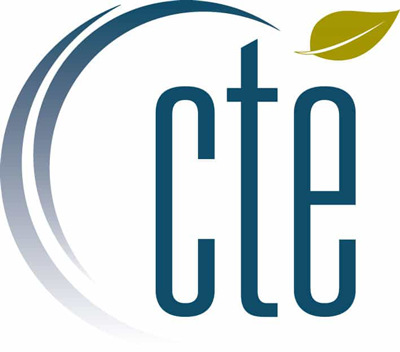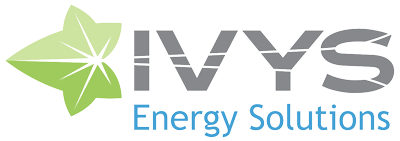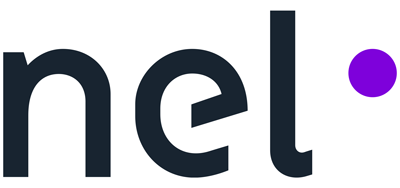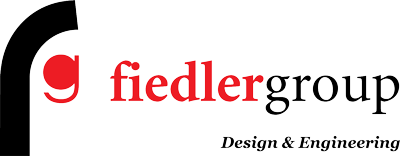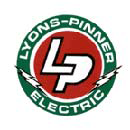MTD is the first transit agency in the nation with a hydrogen fleet fueled entirely from our own 100% renewable source.
The project has three important components that make this technology truly zero emissions; a solar array to produce clean energy, a hydrogen fuel production station that uses solar energy to turn water into hydrogen, and hydrogen fuel cell electric buses that use hydrogen to generate electric power. From sun to street, these are truly zero emission – it’s like riding on sunshine!
This project aligns with MTD's Zero Emission Transition Plan and Climate Action Plan.
Leading the Way
Not only are we the first in the nation to commercially deploy 60-foot articulated hydrogen fuel cell electric buses, we are doing it with our own 100% renewable source - that bold innovation is exactly what we have come to expect from Champagin-Urbana.
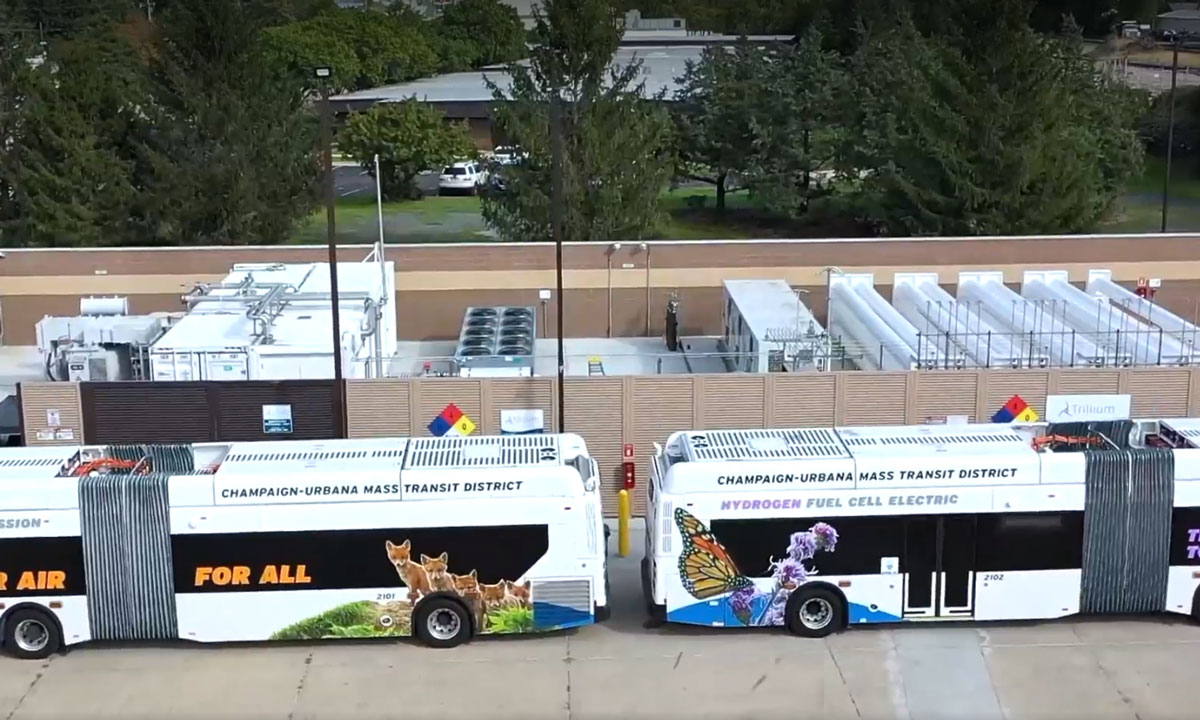
Powered by the Sun
By harnessing the power of the sun to produce our own hydrogen fuel, we do not need to rely on electricity made from burning fossil fuels. MTD has built an array of nearly 5,500 solar panels to generate clean, renewable energy to power our hydrogen fuel production station, thanks to a partnership with our neighbors at the Urbana-Champaign Sanitary District. Any leftover energy created by the solar array will be sold back to the grid as clean energy for our community to use.
On-Site Renewable Fuel Production
By harnessing the power of the sun to produce our own hydrogen fuel, we do not need to rely on electricity made from burning fossil fuels.
On-Site Renewable Fuel Production
By harnessing the power of the sun to produce our own hydrogen fuel, we do not need to rely on electricity made from burning fossil fuels. MTD has built an array of nearly 5,500 solar panels to generate clean, renewable energy to power our hydrogen fuel production station, thanks to a partnership with our neighbors at the Urbana-Champaign Sanitary District. Any leftover energy created by the solar array will be sold back to the grid as clean energy for our community to use.
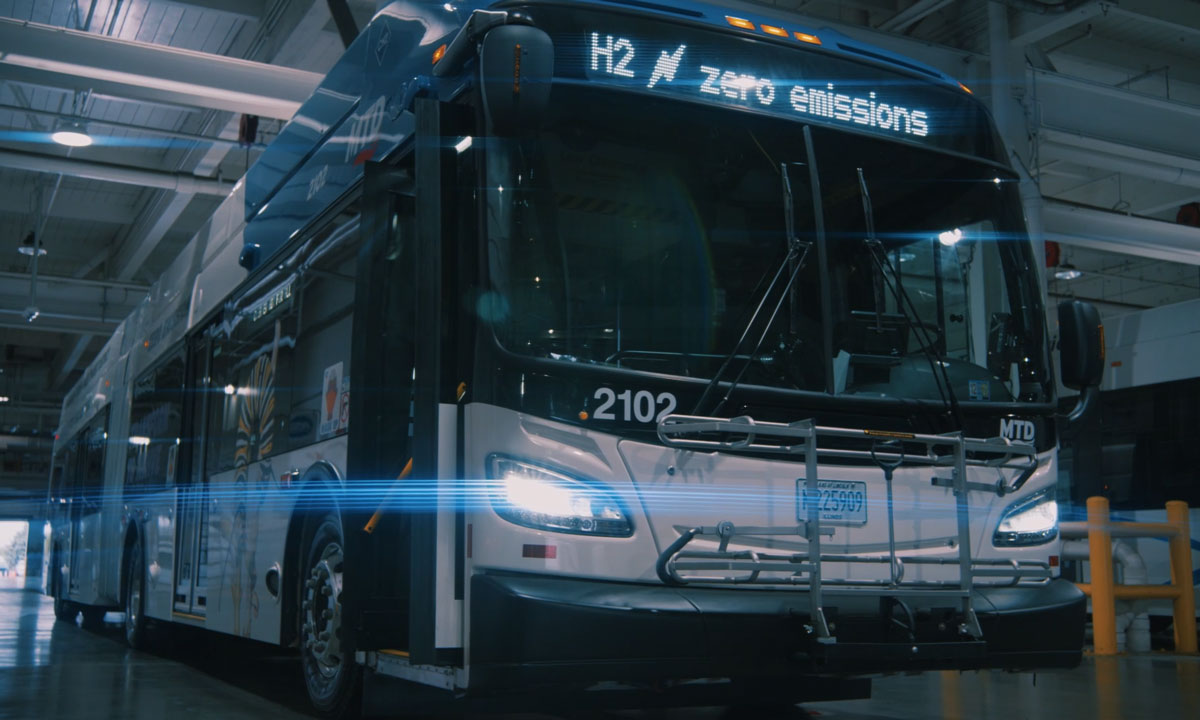
Hydrogen Fuel Cell Electric Buses
We are thrilled to welcome Champaign-Urbana’s first zero emission buses. Two 20-year-old diesel buses will be replaced with zero emission hydrogen fuel cell electric buses.
Hydrogen Fuel Cell Electric Buses
We are thrilled to welcome Champaign-Urbana’s first zero emission buses. Two 20-year-old diesel buses will be replaced with zero emission hydrogen fuel cell electric buses. As an industry leader, MTD is one of the first transportation agencies in the country to power hydrogen fuel cell electric buses using 100% renewable hydrogen generated by solar energy.
MTD’s hydrogen fuel cell electric buses are electric vehicles that use compressed hydrogen as an energy source. The bus has a fuel cell that acts like a continuous battery charger to extend the range of the vehicle. The only output from the tailpipe is water vapor that is clean enough to drink.
- The only output from the tailpipe is water vapor that is clean enough to drink.
- Fuel cells are more compact, and lighter in weight at approximately one third of the weight of batteries.
- During low winter temperatures, fuel cell vehicles use waste heat from the fuel cell to keep the inside of the vehicle warm, saving significant energy.
- Fuel cell electric buses can drive up to 300 miles on a single refueling.
- Fuel cell electric buses can be refueled in 10 minutes. Recharging large battery packs take as long as six hours.
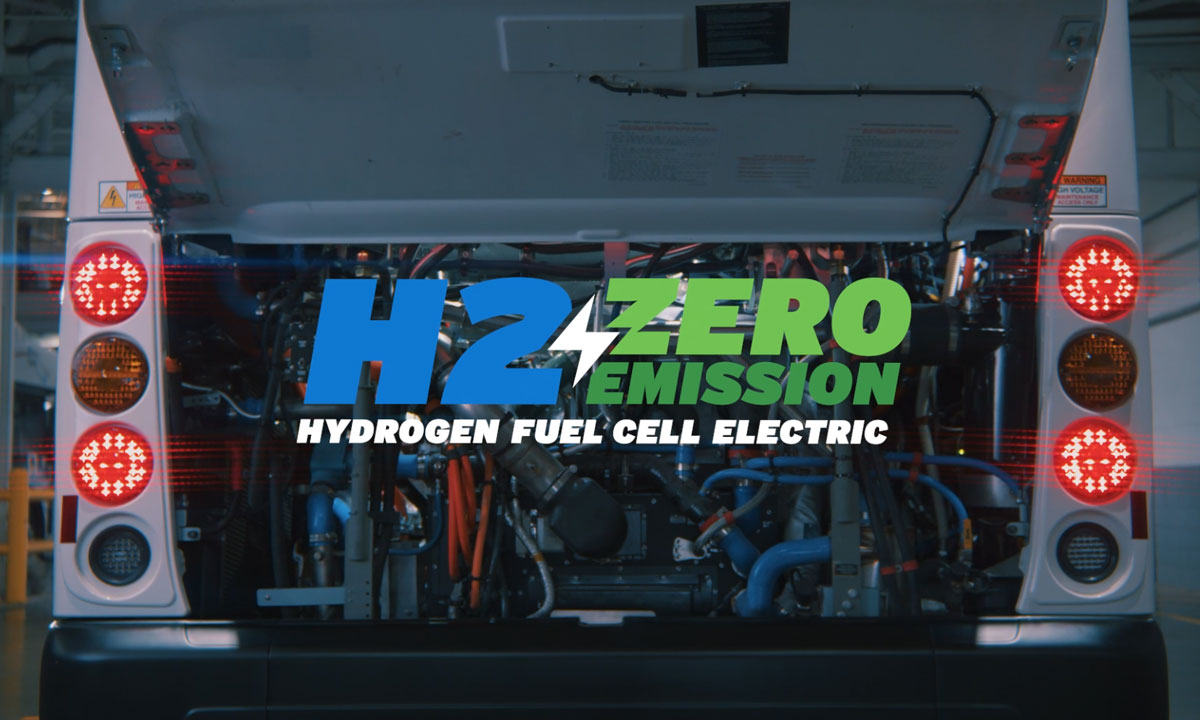
Why Hydrogen
Hydrogen buses align with the District’s commitment to environmental responsibility, as we strive to reduce our fossil fuel consumption. There are two types of electric-drive vehicles leading the way: battery-electric buses and fuel cell electric buses. A fuel cell electric bus operates on gaseous hydrogen. The components on the bus are nearly the same as a battery electric bus, except the fuel cell and onboard hydrogen storage vessels.
Why Hydrogen
Hydrogen buses align with the District’s commitment to environmental responsibility, as we strive to reduce our fossil fuel consumption. There are two types of electric-drive vehicles leading the way: battery-electric buses and fuel cell electric buses. A fuel cell electric bus operates on gaseous hydrogen. The components on the bus are nearly the same as a battery electric bus, except the fuel cell and onboard hydrogen storage vessels.
When making our decision about zero emission and considering either battery electric or fuel cell electric, we focused on a few goals:
- Reduce fossil fuel consumption and deploy zero emission buses. This is not just about bus emissions, but also the energy source that provides the fuel for the bus. By early 2022, the District will use renewable solar energy as the energy source to produce hydrogen, making the buses truly zero emission.
- Minimal operational impact. Battery electric buses have proven to fall short on their range, which means they need to be removed from service and parked to recharge. We need buses that can operate all day long like a diesel or hybrid bus. Hydrogen gives us the flexibility of traditional fossil fuels without the emissions or environmental impact.
"We want to plan our service to serve our community. We don’t want to plan our service to serve our equipment. The beauty of the fuel cell bus is that, operationally, there are no alterations to our system that we need to make. The battery-electric buses do not have the range that allow you to just put a bus out and have it run for 18 hours. A hydrogen bus has a range that is equivalent to a diesel bus, so it’s a one-for-one replacement." — Karl Gnadt, Managing Director
How does it work?
Our fuel cell electric buses will run on renewable hydrogen by using solar energy to produce the fuel on site at our Maintenance Facility.
How does it work?
Our fuel cell electric buses will run on renewable hydrogen by using solar energy to produce the fuel on site at our Maintenance Facility. Through a process called electrolysis, electricity splits water into hydrogen and oxygen, and the hydrogen is then captured and used to fuel the buses. Fuel cell buses run on electricity generated by hydrogen and the only output from the tailpipe is pure water vapor. The energy moves from sunlight to hydrogen to electricity, setting the bus in motion while leaving us with nothing but clean air, pure water, and sustainable transportation.
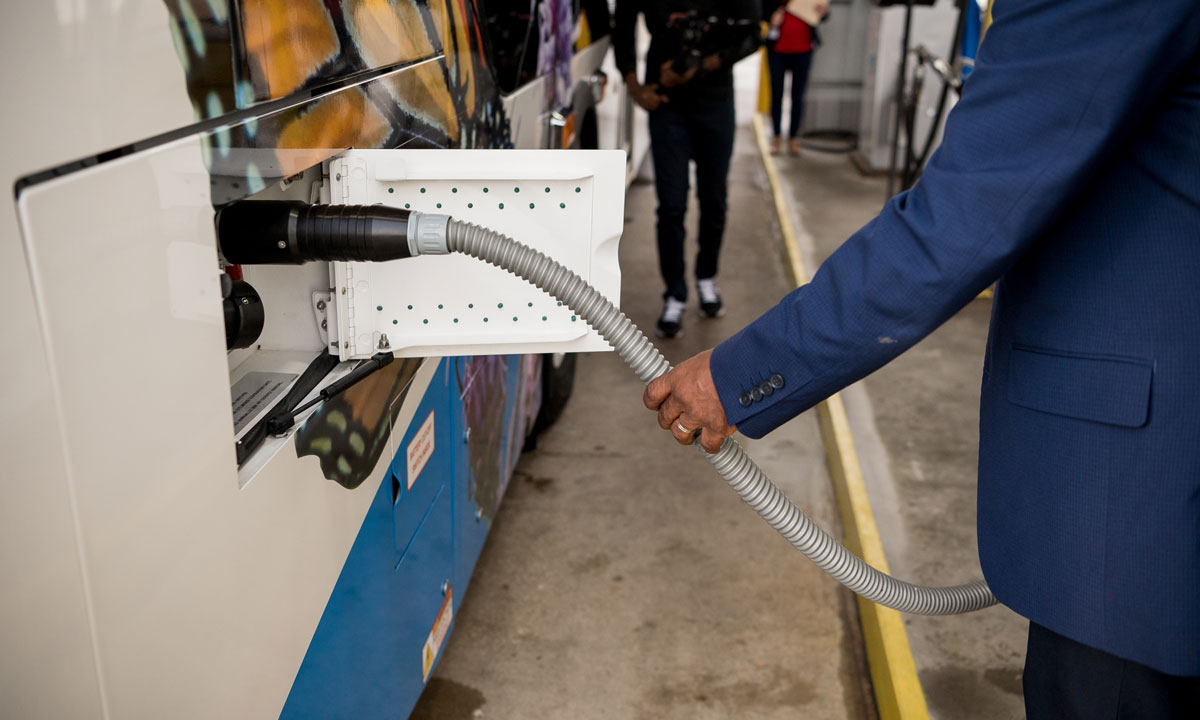
Funded by Federal and State Grants
In 2017 the District was awarded funding through the Federal Transportation Administration (FTA) for this project. Additional federal and state grant funding was secured to cover 94% of our hydrogen program through grants that support renewable energy, zero -emissions, and sustainable transportation. When we secure grant funds, that brings state and federal tax dollars BACK to our community so that C-U can grow and thrive.
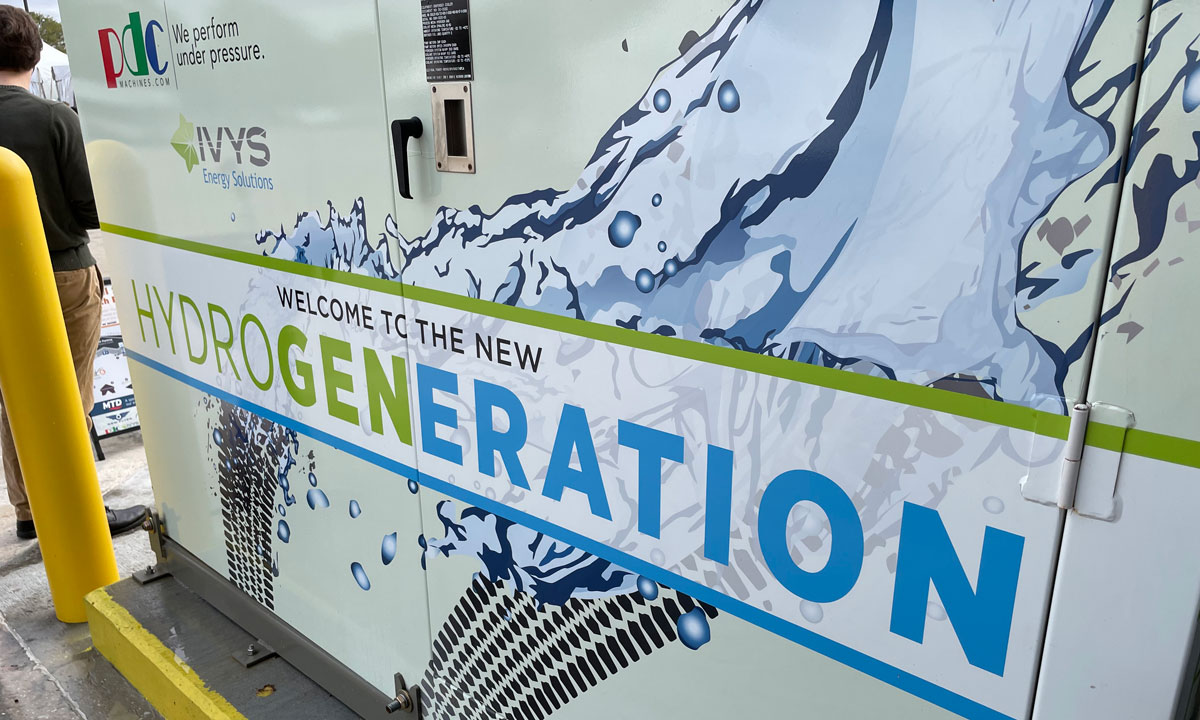
Safer than Conventional Fossil Fuels
When used in accordance with proper guidelines, hydrogen fuel is safe.
Safer than Conventional Fossil Fuels
Hydrogen is the most abundant element in existence – our own bodies are roughly 10% hydrogen. When used in accordance with proper guidelines, hydrogen fuel is safe. Just like diesel and gasoline, there are inherent risks in handling any flammable gas or liquid. In many ways, hydrogen is even safer than conventional fossil fuels. At 14 times lighter than air, hydrogen is the lightest and smallest element in the universe. If a leak occurs, hydrogen gas rises at a speed of 45 miles per hour and disperses rapidly, this makes hydrogen one of the safest fuel sources. And with clean water and oxygen as the only byproducts there is no need to store or dispose of environmental contaminants.
A special thank you to our project partners who have made this possible.


